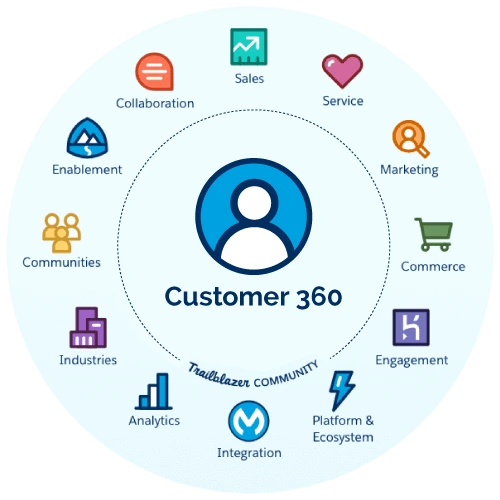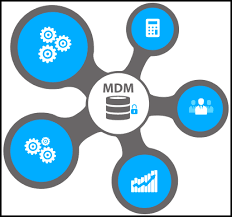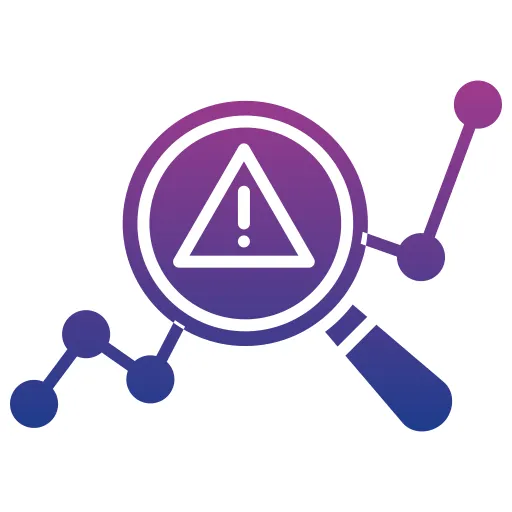Introduction to Anomaly & Fraud Detection
Anomaly and fraud detection systems are critical in today’s data-driven world, where businesses must safeguard against fraudulent activities and operational irregularities. By leveraging advanced data analytics and machine learning techniques, these systems automatically detect unusual patterns or behaviors that deviate from the norm. Whether it’s identifying fraudulent transactions in financial systems, detecting cyberattacks, or uncovering irregularities in operational processes, anomaly and fraud detection plays a crucial role in preventing losses and ensuring the integrity of business operations. As the complexity of threats continues to evolve, businesses must adopt intelligent detection systems that offer real-time monitoring, pattern recognition, and proactive defense against emerging threats.
Core Features of Anomaly & Fraud Detection
Multi-Source Data Collection
- Aggregating data from multiple channels such as transactions, user behavior logs, network traffic, and financial records.
- Real-time integration of data streams to detect potential anomalies or fraudulent activities as they occur.
Data Cleaning and Normalization
- Preprocessing data to remove noise, inconsistencies, and inaccuracies for better detection results.
- Normalizing and structuring diverse data inputs for seamless analysis and detection.
Statistical Anomaly Detection
Machine Learning-Based Detection
- Leveraging machine learning algorithms to continuously learn and adapt to changing patterns in user behavior.
- Classifying detected anomalies as potential fraudulent activities or benign outliers with high accuracy.
User Behavior Analytics (UBA)
- Analyzing individual and collective user behavior patterns to detect deviations that may indicate fraud.
- Identifying abnormal behaviors such as unusual login times, locations, or transaction volumes.
Contextual Anomaly Detection
- Using contextual information such as location, time, and transaction history to enhance anomaly detection accuracy.
- Providing deeper insights into whether detected anomalies are high-risk or false positives.
Real-Time Alerts and Notifications
- Triggering real-time alerts when potential fraud or anomalies are detected, allowing for immediate action.
- Customizable alert thresholds and workflows for different types of anomalies or suspicious activities.
Automated Action Triggers
- Automatically blocking suspicious transactions, freezing accounts, or requiring additional verification steps.
- Integration with security protocols to mitigate risks as soon as fraudulent behavior is identified.
Real-Time Monitoring Dashboards
- Providing live dashboards that display detected anomalies and fraud attempts, offering an overview of potential risks.
- Segmenting detected anomalies by type, channel, or risk level for focused investigation.
Detailed Reporting and Forensic Analysis
- Generating detailed reports on identified fraud patterns, anomaly trends, and potential security vulnerabilities.
- Offering insights into fraud schemes and anomaly types for continuous improvement in detection accuracy.
Fraud Risk Scoring
- Assigning risk scores to transactions, users, or activities based on historical data and anomaly patterns.
- Prioritizing high-risk cases for manual review or automated action.
Predictive Fraud Detection
- Using predictive models to forecast potential fraud occurrences and provide recommendations for risk mitigation.
- Identifying emerging fraud trends and adjusting detection strategies to stay ahead of evolving threats.
Benefits of Anomaly & Fraud Detection
Proactive Risk Mitigation
- Early identification of unusual patterns helps prevent potential fraud or security breaches before they impact the business.
- Continuous monitoring enables real-time alerts, allowing for immediate action on suspicious activities.
Enhanced Financial Security
- Automated fraud detection systems safeguard financial transactions and reduce the risk of monetary losses.
- By detecting irregularities in transactions or behavior, businesses can minimize the impact of fraudulent activities.
Operational Efficiency
- Streamlined fraud detection processes reduce the manual effort required to investigate anomalies, saving time and resources.
- Integration with other systems enables more efficient detection and response workflows across the organization.
Data-Driven Decision Making
- Detailed anomaly reports provide insights for improving internal controls and mitigating future risks.
- Predictive analytics based on anomaly detection allows businesses to anticipate and address vulnerabilities in advance.
Our Location
B-12, B Block, Sector 2, Noida, Uttar Pradesh 201301
We will get back to you within 24 hours, or Call us everyday, 09:00AM - 04:00PM
Request a quote
Conclusion
BOTs and virtual agents have become indispensable tools for businesses looking to improve customer service, boost efficiency, and reduce costs. With the ability to automate routine tasks, provide personalized support, and operate 24/7, these intelligent systems enhance both customer satisfaction and operational scalability. As AI and machine learning technologies continue to evolve, BOTs and virtual agents are expected to become even more powerful, offering more advanced features and capabilities. For businesses that want to stay competitive and meet the growing expectations of their customers, adopting BOTs and virtual agents is a strategic move that delivers significant benefits both in the short and long term
Trusted By A Few Of Our Valued Clients
At Bluethinkinc, our client’s success is our top priority - we work tirelessly to help them achieve their goals, delivering customized solutions that drive growth and transformation.

 Sales Transformation
Sales Transformation Business Process Automation
Business Process Automation Application Upgrade
Application Upgrade Rapid Prototyping
Rapid Prototyping Product Evaluation & Assessment
Product Evaluation & Assessment Customer Service
Customer Service Power Virtual Agent
Power Virtual Agent Omni-Channel Experience
Omni-Channel Experience 360 View of Customer Journeys
360 View of Customer Journeys NextGen Customer Portal
NextGen Customer Portal Campaign & Marketing
Campaign & Marketing Customer Insights
Customer Insights Portal Content Management
Portal Content Management Reporting & Analytics
Reporting & Analytics Marketing Automation
Marketing Automation Master Data Management
Master Data Management Technology Modernization
Technology Modernization Enterprise Architecture
Enterprise Architecture COE as a Service
COE as a Service NextGen Digital Workplace
NextGen Digital Workplace NextGen AI Features
NextGen AI Features Custom Software Services
Custom Software Services Backup & Disaster Recovery
Backup & Disaster Recovery Quality Assurance (QA Testing)
Quality Assurance (QA Testing) C#/.Net
C#/.Net JAVA
JAVA Python
Python Golang
Golang PHP
PHP ABAP
ABAP Appex
Appex Microsoft Dynamics 365
Microsoft Dynamics 365 Salesforce
Salesforce Sugar CRM
Sugar CRM HubSpot CRM
HubSpot CRM Zoho CRM
Zoho CRM Zendesk Sell
Zendesk Sell Magento
Magento Shopify
Shopify WooCommerce
WooCommerce Drupal
Drupal Joomla
Joomla OpenCart
OpenCart Flutter
Flutter Android App
Android App IOS App
IOS App UI/UX Designer
UI/UX Designer Vue.js
Vue.js Alpine.js
Alpine.js Node.js
Node.js Azure
Azure AWS
AWS Bittrex
Bittrex DevOps
DevOps Salesforce Cloud Services
Salesforce Cloud Services Google Cloud Platform
Google Cloud Platform Oracle Cloud
Oracle Cloud Assets and Accelerators
Assets and Accelerators Solutions
Solutions Sales Cloud
Sales Cloud Service Cloud
Service Cloud Marketing Cloud
Marketing Cloud Commerce Cloud
Commerce Cloud Experience Cloud
Experience Cloud Analytics Cloud
Analytics Cloud Financial Services Cloud
Financial Services Cloud Health Cloud
Health Cloud Education Cloud
Education Cloud SAP Cloud Platform
SAP Cloud Platform SAP S/4HANA Cloud
SAP S/4HANA Cloud SAP SuccessFactors
SAP SuccessFactors SAP Ariba
SAP Ariba SAP Integrated Business Planning
SAP Integrated Business Planning SAP Business Technology Platform
SAP Business Technology Platform SAP Customer Data Cloud
SAP Customer Data Cloud SAP Digital Supply Chain
SAP Digital Supply Chain SAP Fiori
SAP Fiori Data & Machine Learning
Data & Machine Learning Speech Services
Speech Services Image Processing
Image Processing Predictions & Forecasting
Predictions & Forecasting Recommendation Engines
Recommendation Engines BOTs & Virtual Agents
BOTs & Virtual Agents Customer Profiling
Customer Profiling Anomaly & Fraud Detection
Anomaly & Fraud Detection Infrastructure As A Service (IaaS)
Infrastructure As A Service (IaaS) Platform As A Service (PaaS)
Platform As A Service (PaaS) Software as a Service (SaaS)
Software as a Service (SaaS) Cloud Architecture & Consulting
Cloud Architecture & Consulting Managed Services
Managed Services Enterprise Mobile Solutions
Enterprise Mobile Solutions .Net Solutions
.Net Solutions Portals & Collaboration
Portals & Collaboration














